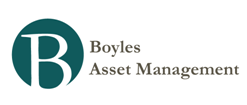The Absolute Return Letter - November 2010: Four Rather Sick Patients
For a world which continues to be on life support – in the form of unsustainably large fiscal stimulus and near zero interest rates – policy makers are fast running out of options. One of the options left is quantitative easing and rumours are rife that the Fed and the BoE are both contemplating another round. But how effective is QE? Evidence from Japan suggests that, as a central bank continues to expand its balance sheet, the law of diminishing returns kicks in. Japan has been at it for years to the point where total central bank assets are now ¼ the size of the overall economy (see chart 3), but the results have been less than impressive. There are several reasons for this, but the most important lesson learned from Japan is that you cannot stop de-leveraging with lower interest rates.
QE2 around the corner? Inside the vaults of the Federal Reserve Bank, this fact does not seem to have sunk in yet with Bernanke seemingly prepared to initiate another round of QE shortly. He has even stated publicly that equity and bond markets are far more sensitive to monetary policy than is the real economy; hence the most effective way to stimulate the economy is through boosting financial markets. One problem with such a policy, though, as pointed out by Edward Chancellor in the FT earlier this week, is that it requires for consumers to draw on their savings to be successful. America needs higher savings and investments, not a continuation of recent years’ reckless spending.
Another problem is that it distorts currencies, but the Fed clearly doesn’t care. Not that they have said so in so many words, but their actions speak their own very clear language. I also find it remarkable that the Fed suddenly seems to be applying inflation targets. In the past, the Fed has always stayed clear of such policy. Now they are stating publicly that QE is necessary as current inflation is too low. Maybe it is, but relative to what? Officially, the Fed does not have an inflation target. The only conclusion I can draw is that they want the dollar to go lower, and equity prices to go higher, in order to fix the economic mess they have created themselves in the first place.
………………..
Related article: Capt Bernanke on course for icebergs – By Edward Chancellor
- Bridgewater On The Fed's Dilemma
Via Zero Hedge: In the old days central banks moved interest rates to run monetary policy. By watching the flows, we could see how lowering interest rates stimulated the economy by 1) reducing debt service burdens which improved cash flows and spending,...
- Hoisington Q3 2013 Letter
The Fed’s capabilities to engineer changes in economic growth and inflation are asymmetric. It has been historically documented that central bank tools are well suited to fight excess demand and rampant inflation. The Fed showed great resolve in containing...
- Which Way For Bonds? Mapping A Path Forward - By Bill Gross
Q: Can you explain what is happening in markets now? Gross: In 1980, the Federal Reserve, led by Paul Volcker, tightened the quantitative noose to tame double-digit inflation, fueling an unprecedented tailwind for bond prices. Thirty years later...
- Hussman Weekly Market Comment: Out On A Limb - An Investor's Guide To X-treme Monetary And Fiscal Conditions
Government intervention in the U.S. economy is approaching the point where probable long-term costs exceed short-term benefits – straining to maintain the pace of extraordinary fiscal and monetary measures that have repeatedly nudged the U.S. economy...
- Wsj Op-ed: Open Letter To Ben Bernanke
Signed by Seth Klarman, Jim Grant, Jim Chanos and Niall Ferguson, among others: The following is the text of an open letter to Federal Reserve Chairman Ben Bernanke signed by several economists, along with investors and political strategists, most of...

